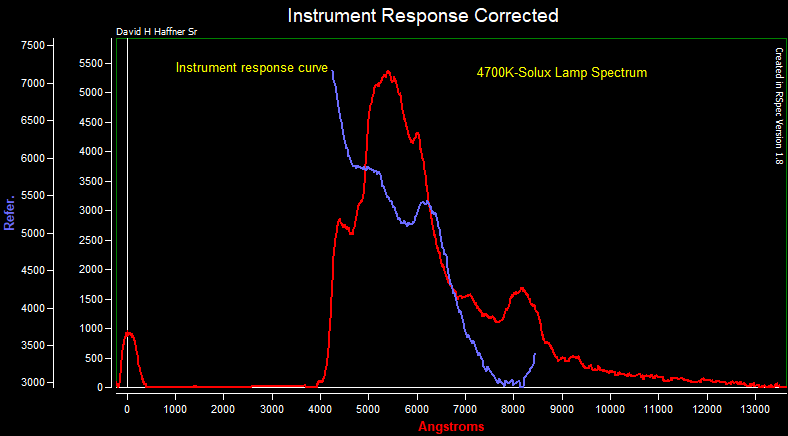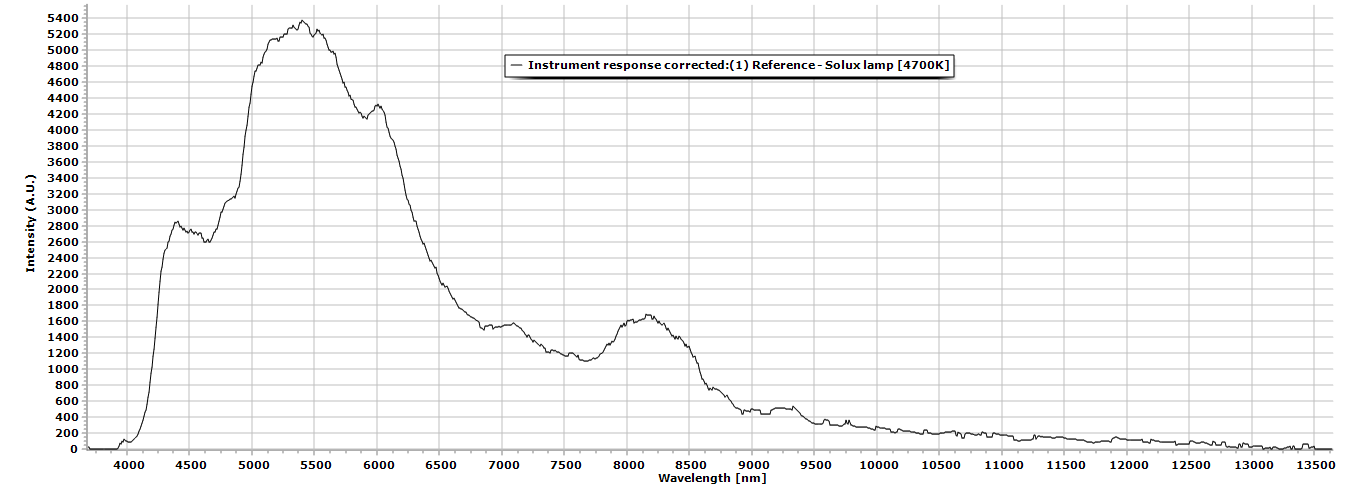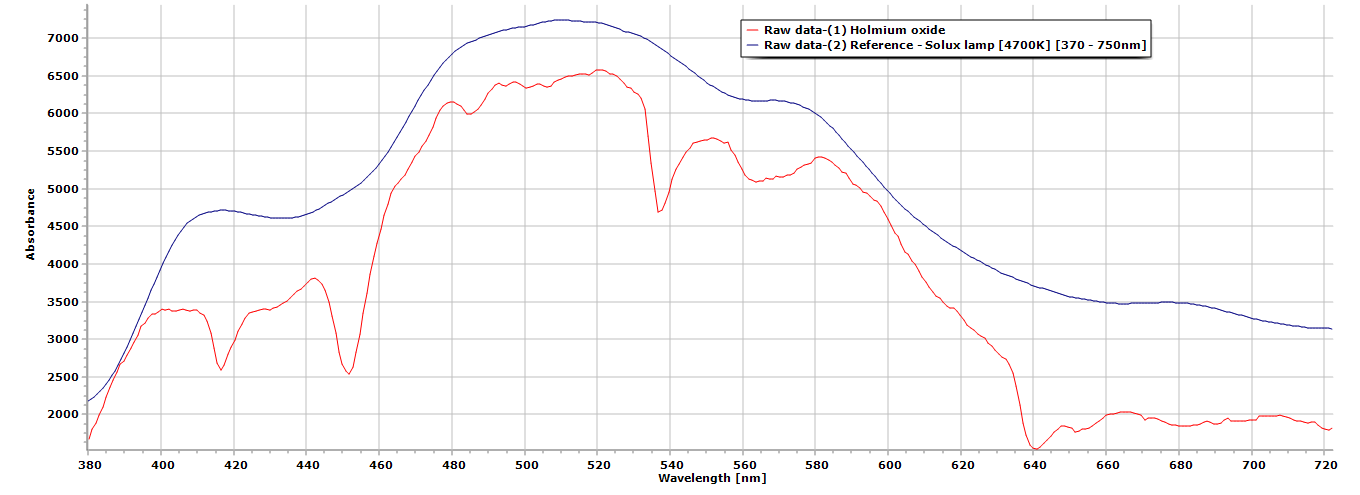I'm pretty sure this is the limit for this piece of equipment, so I may have to change the V2.1 to V2.7 :) That was the original goal, knowing I was using a DVD as my diffraction grating. I will explain a little more later, so here are the latest plots:

This 1st plot shows my instrument response curve which I can implement in real time as I am shooting spectral frames, I was able to construct a response curve effectively because I was able to shut off white balance and gamma correction on the cmos camera.
This same procedure is also done for the 8-bit CCD detector.
Here is the raw spectral data for the Solux lamp before smoothing:


Now this is the raw data with the sample (Holmium oxide and the Solux lamp as reference spectrum,) you notice the reference spectrum is smoothed out because it was processed from the raw spectral data after correction from the instrument response curve.
Now this reference spectrum can be used for other absorption spectra as long as the same conditions are met, since this light source has a steady enough broadband intensity spectra.

And so this is our final product, a 2.70nm resolution calibration of our spectrometer using Holmium oxide as our calibration standard.
I will be updating all pics, both of the spectrometer and laser collimation tube assembly since it has changed since the last pics I posted.
 David H Haffner Sr
David H Haffner Sr
Discussions
Become a Hackaday.io Member
Create an account to leave a comment. Already have an account? Log In.
Hi David, What about using a blu-ray for a grating?
Are you sure? yes | no
Hey Ted, ha, ha, oh yes if only I could, the only problem with that is, my camera's response can only go down to 390nm. Too many Ln/mm on a Blu-ray, if I'm correct I think its around 2700 ln/mm, this causes my wavelength range to be cut down drastically to the ultra violet range where the cmos cannot pick it up.
To be perfectly honest, I'm using the wrong slit width anyway, but it's the only one I have so I had to use it until I got in my 0.20mm slit in from Ocean optics.
Its always a game you must play between the correlation between slit width and mm/gr. Can't circumvent the laws of physics :)
Are you sure? yes | no
Interesting. How about commercial gratings? They're probably expensive, I imagine.
Are you sure? yes | no
Hey, what did you think about my thoughts on your NICad battery problem?
Are you sure? yes | no
It's possible. There are a ton of variables. Another one I came across is that NiCd's (and NiMH cells) only reach their full capacity after maybe 5-10 charge/discharge cycles. They typically come from the factory "unformatted," so you need to cycle them a few times to get them up to spec. I didn't have time for that, so I just used them as they came. That might explain why the best results came from an old set of NiMH cells I had used many times in the past.
Are you sure? yes | no
Oh the commercial gratings are certainly the way to go but the cheapest I have found are at Thorlabs for about $109.00 US, they are the visable transmission gratings made from Schott glass. There 3mm thick and very delicate, I dunno man :)
Ok, that makes sense about the NiCad's, I still like UR demonstration with the drill, even with 3 screws its still amazing.
Are you sure? yes | no